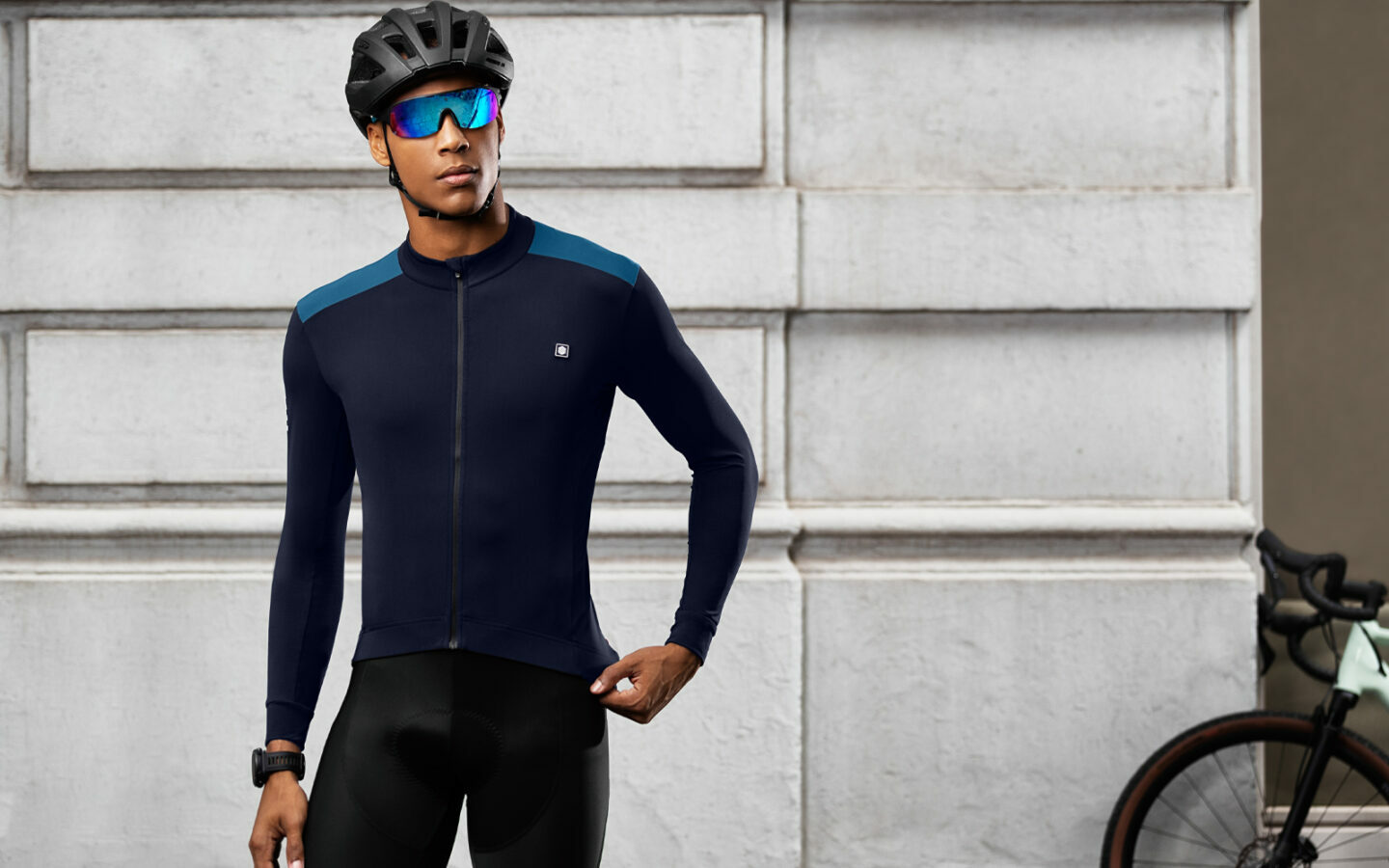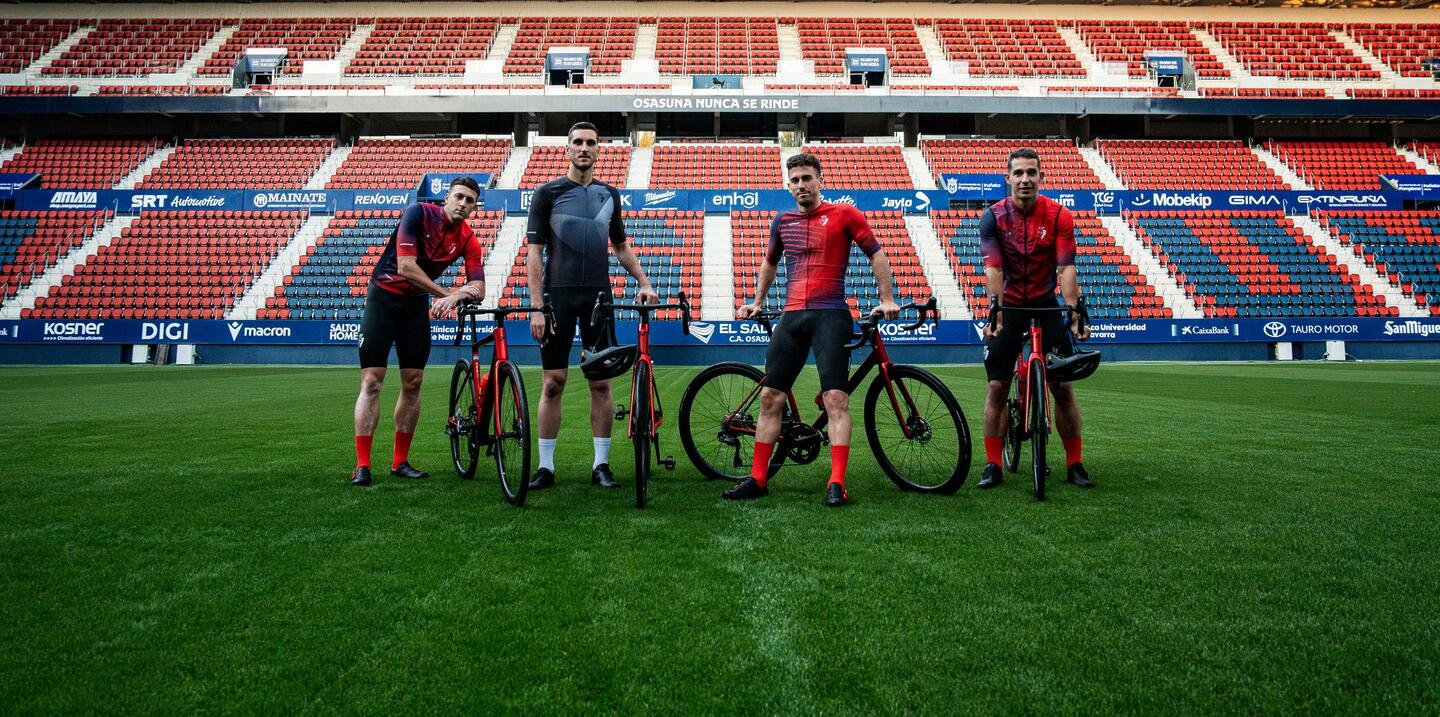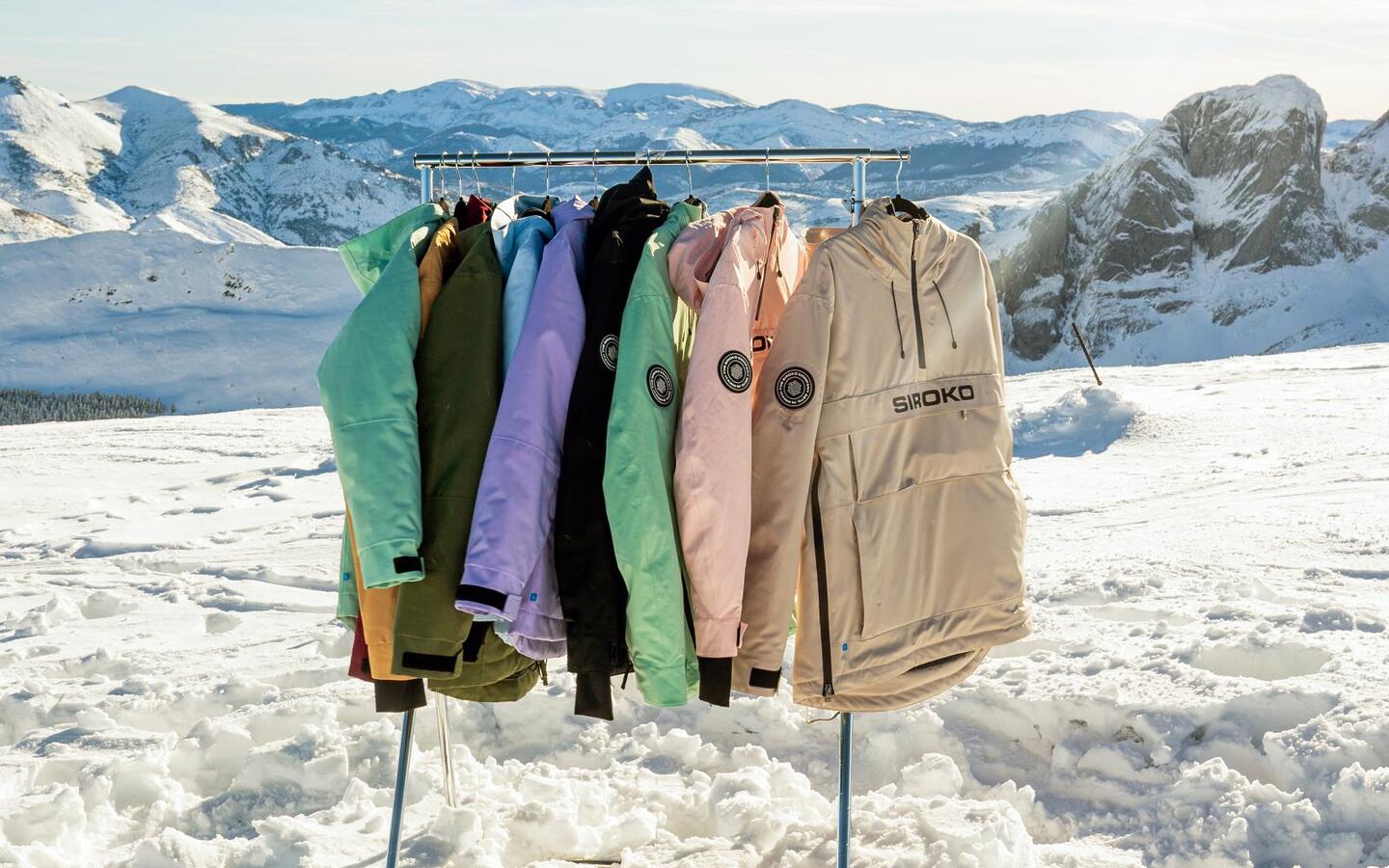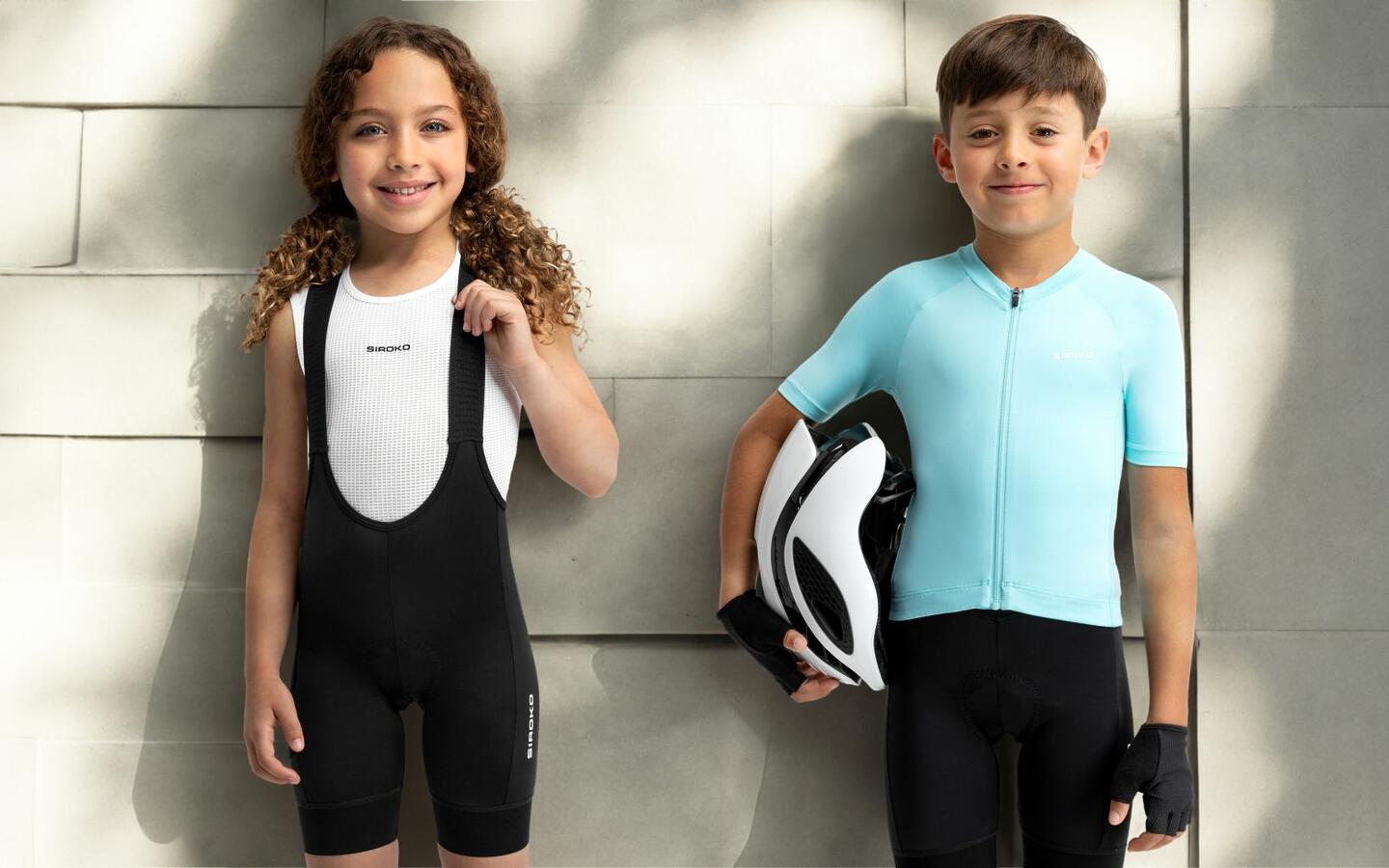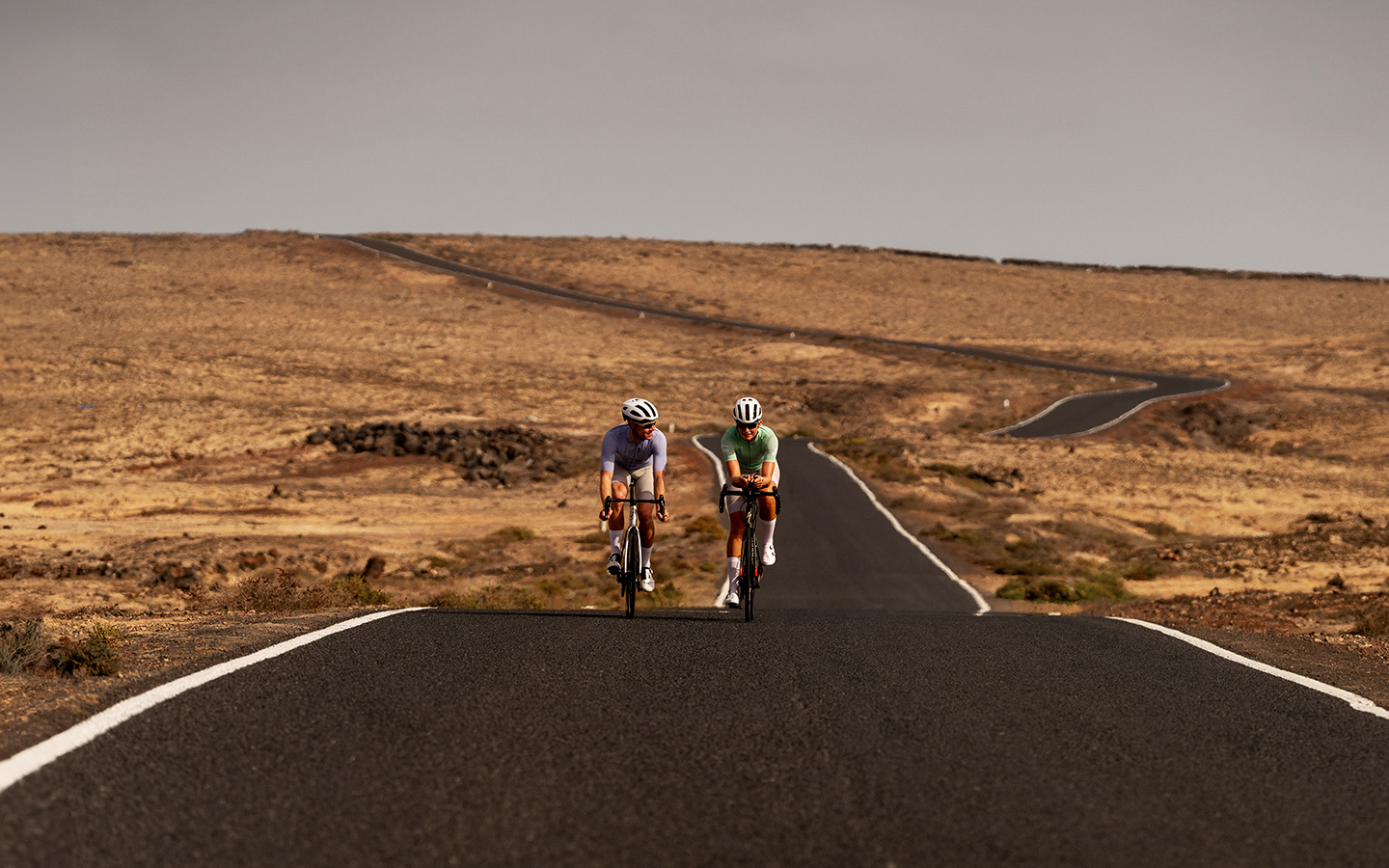Getting it right when it comes to cycling clothing is easier in the winter and summer as compared to the spring and fall. During the coldest months, we make sure we’re warmly dressed and well protected from low temperatures, and during the hottest months we’re always thinking about wearing cool and light clothes. However, the transition seasons are quite tricky, as finding the adequate clothing for a whole day full of temperature changes is definitely a challenge.
Thankfully, cycling apparel has greatly evolved in the last few years, and there are many different fabrics being used to guarantee the right amount of protection and comfort while being suitable for all temperature changes experienced in the spring and fall. In this post, we’ll go over the different types of cycling jerseys available in our Siroko cycling section.
First and foremost, we must keep in mind that the key in dressing adequately for the spring and fall is to combine different items of clothing and never fall short: that’s what rear pockets are for. Choosing all the different layers in order to put them on and take them off while on the saddle, as well as carrying enough extra protection for the cold and rain, is essential to enjoy cycling in these seasons.
M4 long sleeve thermal cycling jersey
Suitable for temperatures between 5 and 16 ºC, and available for both men and women in a wide range of colors. The versatility of its Italian Carvico fabric is the highlight of this cycling jersey, offering high breathability as well as optimal thermal regulation and protection for the utmost comfort.

This cycling jersey can be combined, according to temperature range, with any type of base layer: a non-sleeve mesh base layer, a short/long sleeve merino wool base layer, etc. ― and for extra protection it can be paired with a rain jacket or a cycling vest.
SRX long sleeve merino wool cycling jersey
Recommended for temperatures between 8 and 20 ºC. This cycling jersey is currently only available for men, in two models featuring classic and elegant colors: SRX Pro World Race and SRX Pro Exclusive.

This cycling jersey does not offer as much thermal protection as the previous one. However, the combination of high-quality merino wool and polyester achieve optimal thermal insulation and breathability.
Its snug fit allows it to be used, just like any other long-sleeve cycling jersey, in combination with any type of cycling base layer. Then, you can add a light cycling vest on top such as the Blaast, a cycling rain vest like the SRX Pro Layer, or one with extra thermal insulation such as the SRX Ultra Warm.
M2 long sleeve cycling jersey
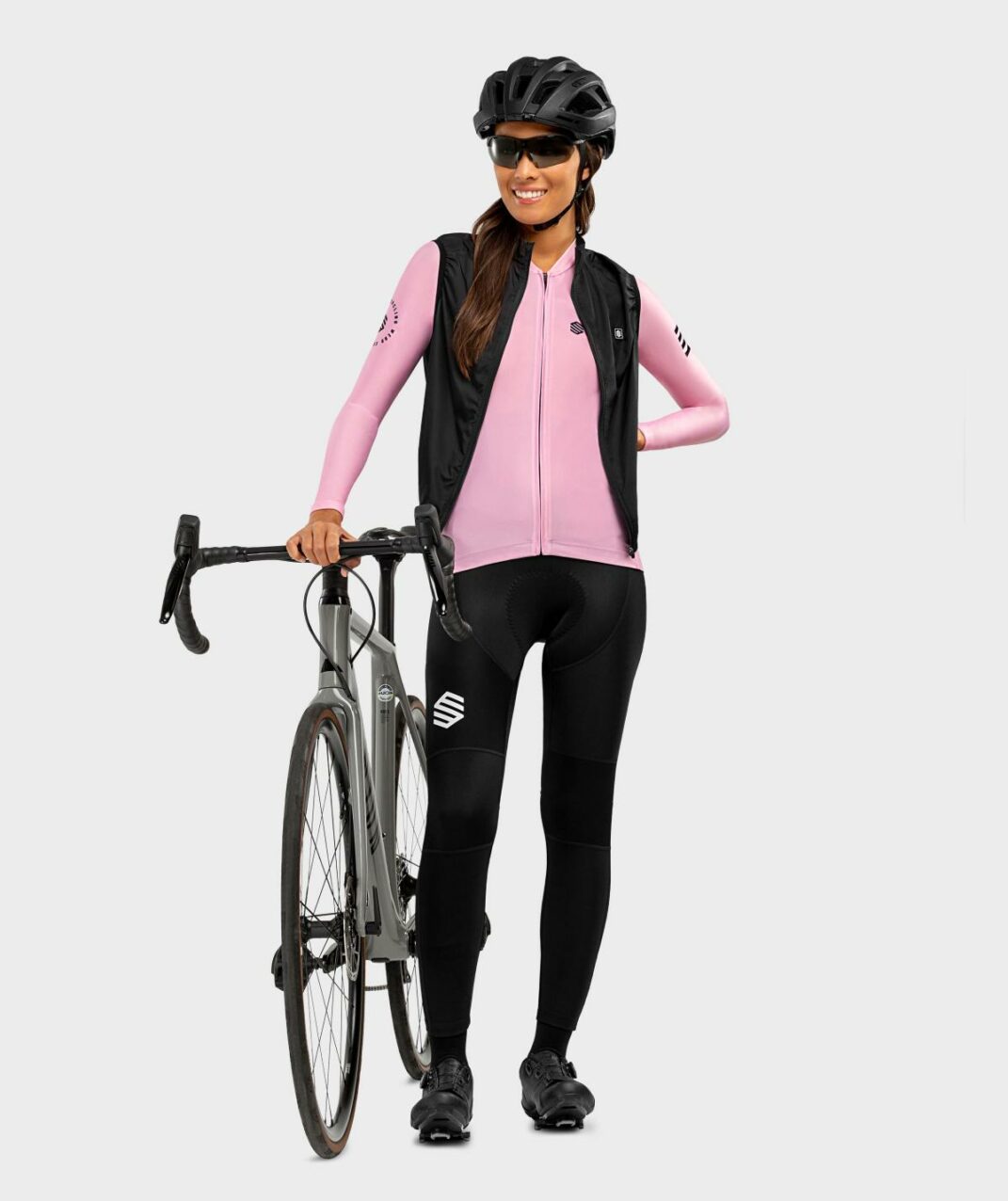
Temperatures are rising (10-20 ºC), so now’s the time to wear any of the many different M2 cycling jersey models for women and for men. The Eclipse for women and the Arizona for men are two bestsellers among the ones available now at Siroko. Every season, the styles are renewed to meet the clients’ tastes and follow what’s in fashion.

When it comes to layering this jersey with other garments, you have the same options as you had with the M4 and SRX cycling jerseys.
The M2 is a super light and breathable long sleeve cycling jersey that can be used in the summer as well. However, if you do decide to use a long sleeve for the hottest and/or most humid days, we recommend any of these two SRX models, the Pro Kühtai and Pro Roselend. They are even lighter and more breathable.
Short sleeve cycling jersey: Suitable for spring and fall?
Yes, it is. As long as you know you’ll be able to withstand the temperatures without getting too cold, you can wear a short sleeve cycling jersey. Whether to pair it with arm warmers or just choosing a long sleeve jersey from the get go is something we discussed in a more detailed fashion in this blog post. We strongly recommend you take a look at it to get some extra info.

At Siroko we have three different types of short sleeve cycling jerseys: M2, M3 and SRX (all of them available for both men and women). You can use any of these three, but our advice is to use the M2 combined with a short sleeve merino base layer, arm warmers and a windproof vest or rain vest. These are three accessories that can be easily taken off and you will always have extra protection.
To conclude, we want to make clear that our recommendations are quite generic, as not all climates are the same and not all cyclists have the same tolerance to low or high temperatures. For example, spring in the South of Spain is not the same as in Denmark. A Danish cyclist in Málaga for the spring will most likely use summer clothing, whereas a cyclist from Málaga will probably still be wearing winter clothing. So keep this in mind: Layer up and don’t fall short.
